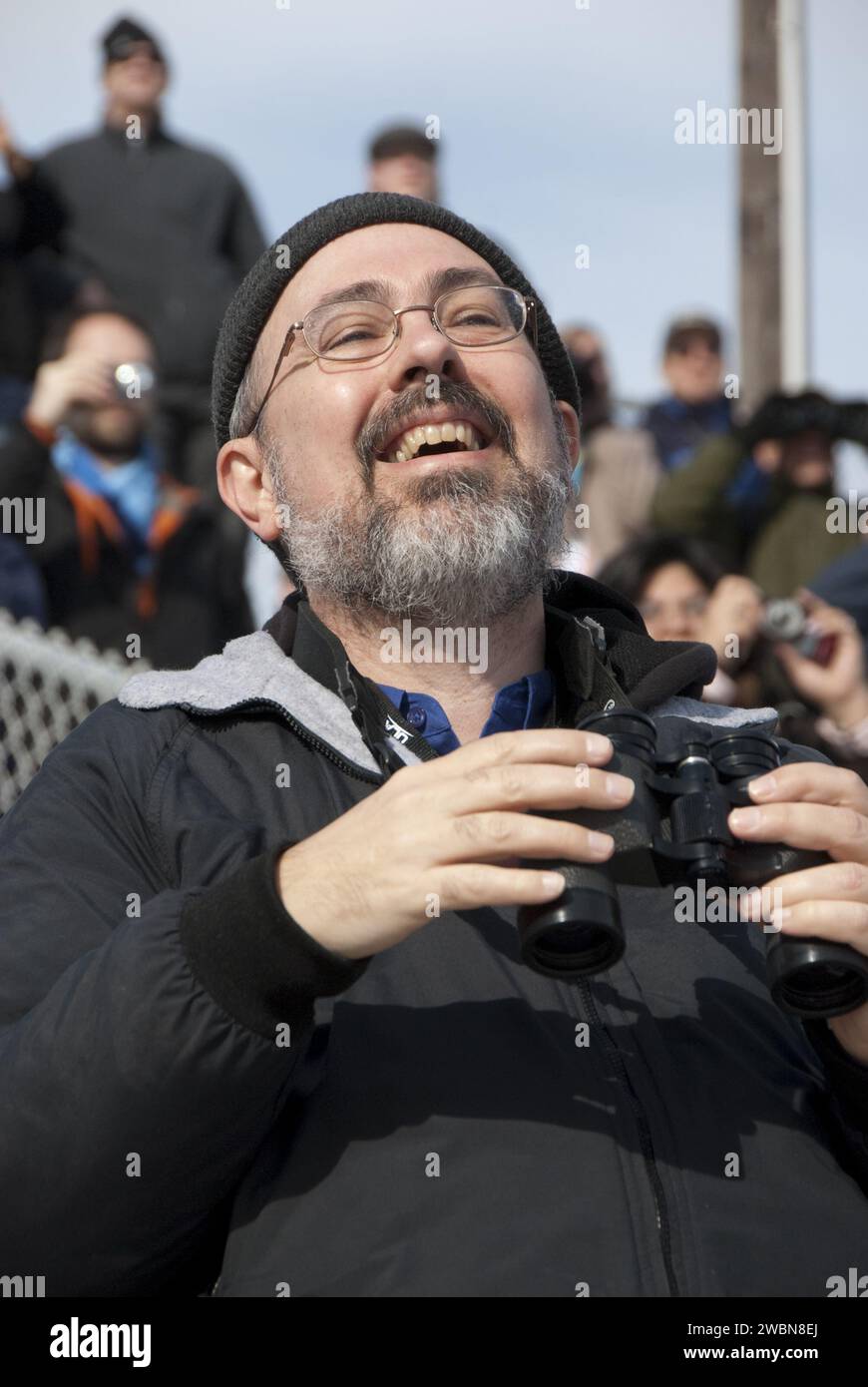CAPE CANAVERAL, Fla. – Dean Pesnell, NASA Goddard Space Flight Center project scientist for the Solar Dynamics Observatory, enjoys watching its launch from the Banana Creek viewing site at NASA's Kennedy Space Center in Florida. Liftoff from Launch Complex 41 on Cape Canaveral Air Force Station aboard a United Launch Alliance Atlas V rocket was at 10 23 a.m. EST Feb. 11. This is the 100th launch of a commercial Atlas Centaur rocket. The observatory, known as SDO, is the first mission in NASA's Living With a Star Program and is designed to study the causes of solar variability and its impacts o

Image details
Contributor:
NASA/piemags / Alamy Stock PhotoImage ID:
2WBN8EJFile size:
17.2 MB (450.3 KB Compressed download)Releases:
Model - no | Property - noDo I need a release?Dimensions:
2008 x 3000 px | 17 x 25.4 cm | 6.7 x 10 inches | 300dpiMore information:
This image is a public domain image, which means either that copyright has expired in the image or the copyright holder has waived their copyright. Alamy charges you a fee for access to the high resolution copy of the image.
This image could have imperfections as it’s either historical or reportage.
CAPE CANAVERAL, Fla. – Dean Pesnell, NASA Goddard Space Flight Center project scientist for the Solar Dynamics Observatory, enjoys watching its launch from the Banana Creek viewing site at NASA's Kennedy Space Center in Florida. Liftoff from Launch Complex 41 on Cape Canaveral Air Force Station aboard a United Launch Alliance Atlas V rocket was at 10 23 a.m. EST Feb. 11. This is the 100th launch of a commercial Atlas_Centaur rocket. The observatory, known as SDO, is the first mission in NASA's Living With a Star Program and is designed to study the causes of solar variability and its impacts on Earth. The spacecraft's long-term measurements will give solar scientists in-depth information to help characterize the interior of the Sun, the Sun's magnetic field, the hot plasma of the solar corona, and the density of radiation that creates the ionosphere of the planets. The information will be used to create better forecasts of space weather needed to protect the aircraft, satellites and astronauts living and working in space.